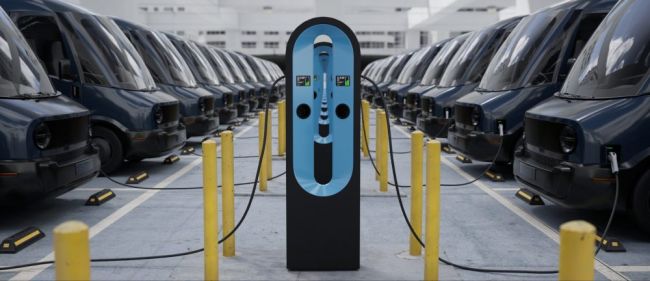
The State of Fleet Electrification: Plug-In Hybrids vs. All-Electric
Is the dream of vehicle electrification dead or just delayed a bit? Earlier this year, legacy auto manufacturers announced they would slash electric vehicle production and pivot toward hybrid vehicles.
These dramatic changes were in response to the drop-off in consumer demand for EVs and the Biden administration’s announcement of a new technology-neutral approach based on performance, giving automakers room to innovate to meet emissions standards. The administration revised regulations that originally mandated battery electric vehicles, or BEVs, comprise 50% of new-vehicle sales by 2030 to 56% of sales by 2032.
The U.S. Environmental Protection Agency also established new protective tailpipe emissions standards for light- and medium-duty vehicles that will phase in 2027 through 2032 model years.
Automakers will have more flexibility to pursue fuel-saving technologies, including hybrids, turbocharging and other internal combustion engine enhancements.
Will the new standards do enough to accomplish climate goals, or is this an admission that the BEV ecosystem was too far ahead of the curve? As many OEMs curtail EV production to focus on hybrids, will the commitment to a zero-emission future fade away?
“Generally, fleets will stay the course and continue their electrification plans,” said John Ciarlone, senior product manager for fleet consultant Wheels (www.wheels.com). “They won’t be adjusting to more hybrids; if anything, they’ll accelerate their conversion.”
In the meantime, the EPA is finalizing regulations in several areas, including off-cycle and air-conditioning credits; upstream emissions associated with zero-emission vehicles and plug-in hybrid electric vehicles (PHEVs); medium-duty vehicle incentive multipliers; and vehicle certification and compliance.
The EPA is also establishing new standards to control refueling emissions from incomplete medium-duty vehicles, as well as battery durability and warranty requirements for light- and medium-duty EVs and PHEVs.
One question is, will there be enough EVs in the market to equip fleets to meet those goals?
The consumer market has absorbed demand for EVs, about 9% market share in the U.S., based on early adopters and those who put sustainability at the top of their buying criteria. At this point, EVs face some headwinds in competing for mass adoption by the average car buyer. Commercial vehicles face the same obstacles, according to Phil Dunne, U.K. managing director at the global strategy consulting firm Stax (www.stax.com).
“Electric vehicles have not yet made the technological step forward that would allow them to compete on a like-for-like pricing basis,” he said. “We’re waiting for the next leap forward, whether it’s solid-state batteries or something else, that will allow that next segment of the car-buying population and the commercial vehicle-buying population to take the step.”
Charging Investments
At the same time, many utility fleets have invested heavily in purchasing EVs and installing expensive charging infrastructure to meet emissions reduction targets.
Utility fleets, like last-mile delivery trucks, have an advantage in electrification because they operate on a return-to-base model. Utilities have set up charge points at their yards or use public chargers when needed.
“In the return-to-base model, you should still be able to meet the efficiency requirements that the state or federal government has mandated,” Dunne said.
Some utilities have installed chargers at drivers’ homes for take-home vehicles.
“Fleets with take-home vehicles have been installing chargers in drivers’ homes, and the results have been very positive so far,” Ciarlone said. “For fleets that keep their vehicles on-site overnight and need a charging depot, electrification can present significant challenges.”
Strategies for Success
To be successful with EVs, fleet managers must develop new charging strategies and driver routines.
“EVs are not gasoline vehicles with electric motors,” Ciarlone said. “If you attempt to manage your EV fleet like an ICE fleet, you will be disappointed. The habits we form around these vehicles will differ in subtle but distinct ways from ICE vehicles.”
Automakers appear to be pivoting to plug-in hybrids for light vehicles. They carry both a battery and an internal combustion engine. Electricity drives the powertrain for a given range, and then the engine takes over. Some hybrids use a range-extender engine, which drives a generator that recharges the battery.
Because of the different types of plug-ins, there’s a lack of clarity on their role in meeting emissions targets through 2050.
“The automakers have figured out they can probably reach the targets by pushing more plug-in hybrids without having to go all in on the battery electric vehicles,” Dunne said.
Plug-in hybrids were designed as a bridge to the fully electrified world, allowing technology time to catch up to the vision. It seems plug-ins will have to play that role for a bit longer.
Remarketing Upheaval
For fleet managers, the volatility in the EV market is upsetting the remarketing equation, which drives many fleet purchasing decisions.
“Remarketing has always been a critical part of the decision-making process of what vehicles and technology you buy,” Dunne said. “The remarketing equation is up in the air because legislation and demand keep changing. The remarketing angle, which was always the hard-won skill of the fleet manager, has become just about impossible.”
EV Future Delayed
Dunne thinks the dream of electrified fleets isn’t dead; it’s just a bit behind schedule.
“This is only a timing issue because eventually everything is going to go electric,” he said. “In the short term, fleet managers may have to take advantage of the availability of plug-in hybrids to meet fuel economy targets because battery electrics are still too expensive.”
About the Author: Gary L. Wollenhaupt is a Colorado Springs-based freelance writer who covers the transportation, energy and technology sectors for a variety of publications and companies.

